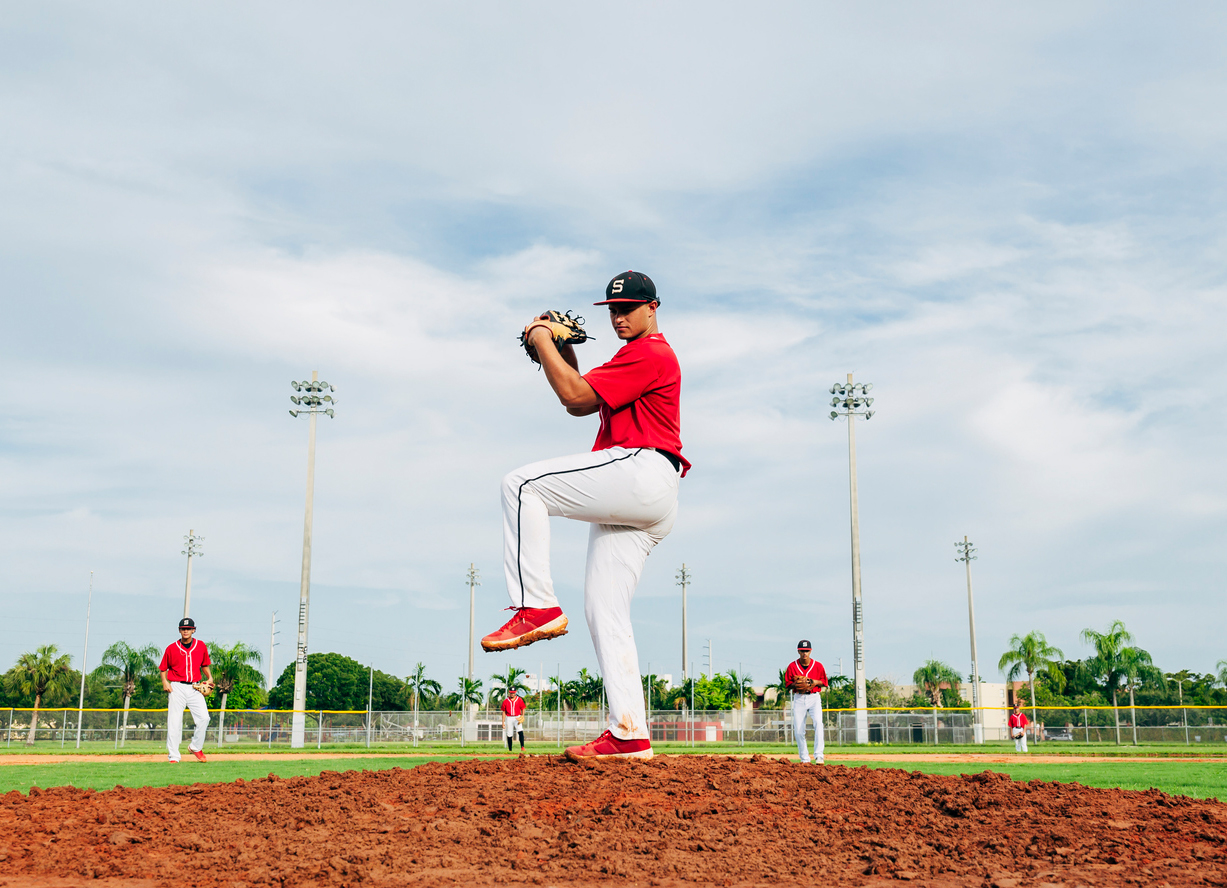
Most states have moved away from self-quarantine and are now resuming the “new normal” with COVID-19 in our midst. From March through June, youth and adolescent sports were canceled. Sports organizations are now trying to play catch up by squeezing spring and summer sports into July and August. With this ramp-up in games, we have seen a significant increase in sports-related injuries, especially baseball throwing injuries. Two such injuries are growth plate injuries of the throwing elbow and shoulder.
Growth-plate injuries of the shoulder and elbow are common injuries in youth and adolescent baseball players. The growth plate (epiphyseal plate or physis) is an area of cartilage at the end of a bone responsible for bone growth. The growth plates eventually close after maturation. There are two critical growth-plates in the arm bone (humerus): one near the shoulder and one near the medial (inside) elbow near the “Tommy John Ligament” (ulnar collateral ligament). Because the growth-plate is an open zone of soft cartilage, it is a weak spot vulnerable to injury. In children and adolescents, the growth plate is often injured instead of spraining or tearing the “Tommy John Ligament,” as seen in adult baseball throwers.
Overhand throwing by nature puts valgus stress on the elbow. Valgus stress is a fancy term to mean that the elbow is bending in an unnatural direction in which the forearm (ulna) and arm (humerus) attempt to detach. The 2 inch “Tommy John Ligament” holds the elbow together during this throwing motion. Forces at the elbow (growth plate and or “Tommy John Ligament”) can reach up to 75% of the pitchers’ body weight during throwing. Overuse or excessive throwing without adequate rest and recovery can lead to; pain, growth plate inflammation, adaptive growth plate widening, or fragmentation or avulsion fractures (small pieces of bone rip away). Growth-plate injury at the elbow causes pain to the touch on the inside bony prominence of the elbow (medial epicondyle).
At the shoulder, the growth-plate injury is felt in the front or outside of the shoulder. In both elbow and shoulder injuries, there is often a limited range of motion, weakness, and pain with throwing. Growth-plate injury is diagnosed via medical history, physical exam, and x-ray. X-rays are used to determine if there is growth –plate widening or avulsion fracture.
Treatment for this injury requires rest and possibly immobilization (sling or casting). Once the growth plate inflammation has reduced, physical therapy is performed to; reduce pain, restore range of motion, strengthen the surrounding musculature, and begin a progressive baseball throwing program. The physical therapist will look at the core (abdominals and hips) and lower extremity (lower half) strength, endurance, and motor control to determine if there are biomechanical faults in the kinetic chain (linked movement patterns ). Ultimately the physical therapist will guide the patient in their attempt to return to all baseball activities. In extreme cases, the athlete may not be able to return to baseball for up to 6 months.
Early detection of baseball throwing injuries is essential to recognize and minimize the progression of the injury. If a young athlete has pain in the elbow and shoulder, the athlete must stop all throwing, immediately, and rest the arm.
Ideally, the coach or parent would be vigilant in preventing the injury in the first place. There is no one way to reduce all potential for an arm injury; however, the evidence has shown that arm injury can be reduced with:
- Developing sound scientifically-based pitch mechanics.
- Not allowing pitchers to throw with arm or body fatigue (36 times more likely of developing injury)
- Following pitch count rules (USA baseball, Little League Baseball).
- Throwing the fastball less than 50% of the time when pitching.
- Optimizing fitness through; mobility, flexibility, strength, and power of crucial throwing muscle groups.
We can help!
Find more physical therapy related articles, learn more about our treatment philosophy, our physical therapy staff, and our 7 convenient locationsthroughout our website.
Dr. Mishock is one of only a few clinicians with doctorate-level degrees in both physical therapy and chiropractic in the state of Pennsylvania. He has also authored two books; “Fundamental Training Principles: Essential Knowledge for Building the Elite Athlete”, “The Rubber Arm; Using Science to Increase Pitch Control, Improve Velocity, and Prevent Elbow and Shoulder Injury” both can be bought on Amazon or train2playsports.com.
